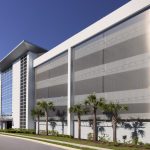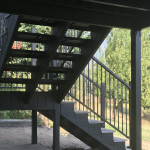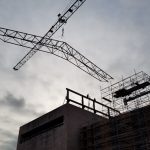When you think of insulated metal panels (IMPs) on a building, do you go straight to cold storage and industrial projects? While IMPs have traditionally been used in those projects, they are now being used on buildings in every industry sector.
Insulated metal panels are a go-to building envelope solution in all industries
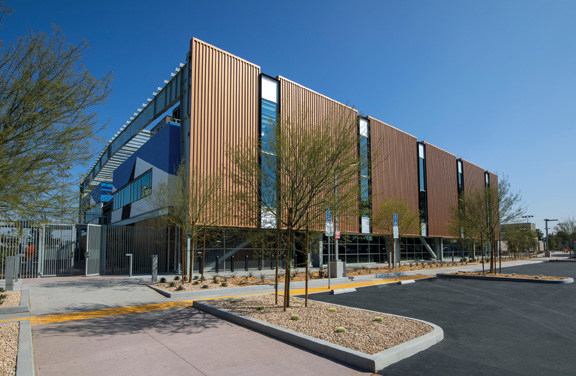
Rancho Cienega Sports Complex, Los Angeles. (Photo courtesy of Metl-Span.)
“For quite some time, IMPs had commonly been used for storage facilities, warehouses, anything in a simple rectangular form for the speed and ease of its installation,” explains Cindy Galiszanski, CDT, Technical Advisor, ATAS International Inc., Allentown, Pa. “But IMPs can be used on many other types of projects providing a sleek contemporary look, whether its new construction or a renovation. Office buildings, museums, schools, airports, multifamily housing can all benefit from the IMP’s function and appearance.”
Over the years, manufacturers and architects have partnered to improve IMP detailing, which allows for a wider use of these systems. “As the benefits have caught on and grown more popular, we now see IMP’s being utilized in almost every sector within the construction industry,” says Nicholas Kauthen, architectural sales representative atAll Weather Insulated Panels (AWIP), Vacaville, Calif.
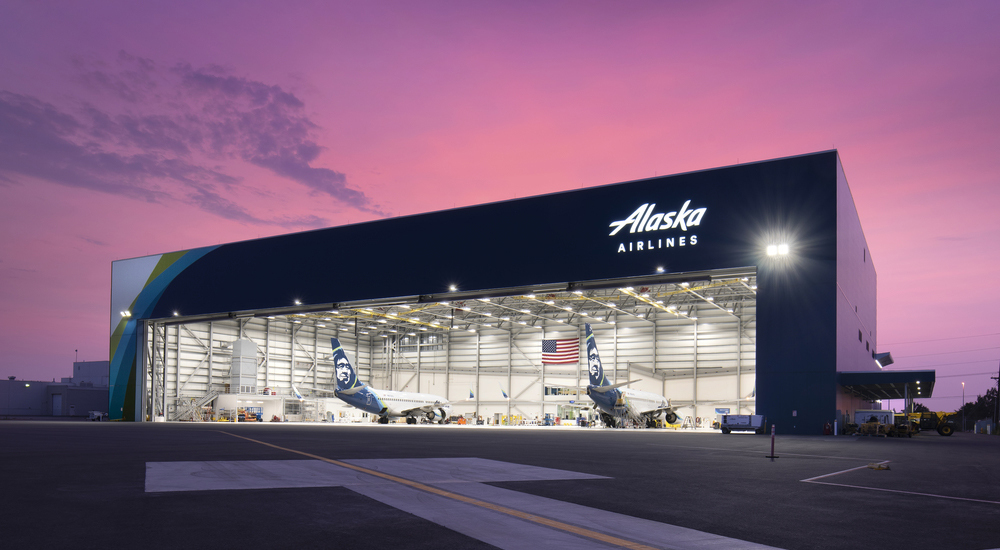
Alaska Airlines Hanger, Anchorage, Alaska. (Photo courtesy of Kingspan Insulated Panels)
Design Appeal
Joe Calsada, business development manager, and Mike Naughton, CSI, CDT, business development manager, Pacific Northwest region, at Lewisville, Texas-based Metl-Span, note, “The possibilities are endless if the panels meet the design intent and project budgets. Insulated metal wall panels can be used in commercial industrial applications, and onto many types of architecturally driven construction with high-end designs and sophistication. For example, IMPs are used for educational, government, municipalities, aerospace, military, hospitality, offices and transportation. These are just a few for reference. With any project type, IMPs provide a durable exterior finish and modern elements. IMPs have great appeal with design teams given their durability and simplification for wall and roof assemblies during construction.”
IMPs are a staple of sports arenas, airport terminals, retail buildings, university campuses and any type of project where both modern aesthetics and energy efficiency are needed, notes Matthew Moore, digital marketing manager at Kingspan Insulated Panels, Deland, Fla. “From sports stadiums to cold storage applications, IMPs are emerging as one of the most versatile and environmentally friendly building materials.”
Higher education, high schools, and facilities for research and development for the auto industry and pharmaceuticals, are other popular markets for IMPs. “We also see interest in IMPs for office space and sport complexes, particularly field houses and stadiums on college campuses,” says Brandon Kinsey, district sales manager, Moon Township, Pa.-based CENTRIA.

Dartmouth Indoor Practice Facility, Hanover, N.H. (Photo courtesy of Metl-Span)
Growth Opportunities
Heath care is a growing market for architectural IMPs, which lend itself to a high-tech look. “We see them being designed for health care facilities because of the clean lines and brilliant paint finishes,” Kinsey says.
According to Kauthen, IMP manufacturers are also seeing growth opportunities in the construction of semiconductor plants, lithium battery manufacturing, data centers and airport expansion projects. Moore agrees, saying, “A growing sector for IMPs is large-scale battery plants, which is driving the production of electric vehicles. The rapid growth in e-commerce is also driving high demand for distribution warehouses, and the data revolution is driving rapid growth in data centers, which IMPs are also very suited for.”
Over the last several years, Calsada and Naughton add, “There has been an increase in demand in government projects of various types including military, aviation, municipalities, water treatment facilities and educational. It is important to note that often insulated metal panels are used for private projects for high-profile end users such as Tesla, Amazon, Google and Facebook.”
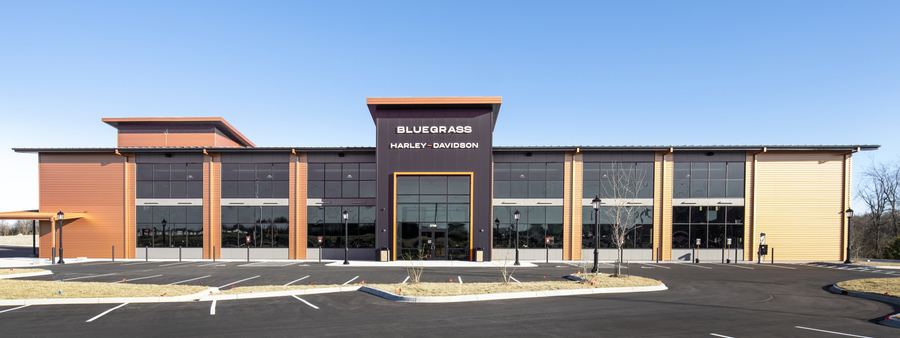
Bluegrass Harley-Davidson, Louisville, Ky. (Photo courtesy of Kingspan Insulated Panels)
Retrofitting Projects
IMPs are also good for projects that need either a facelift or even a full building envelope renovation, Kauthen says. “This is becoming an increasingly popular choice especially as the price of raw materials continues to soar and labor shortages plague the market. On top of that, interest rates and inflation have been the highest we’ve seen in the past 40 years. IMPs can often be installed over the existing cladding upgrading deteriorated façades while providing a sustainable, performance driven, attractive upgraded building envelope.”
For health care retrofits, for example, Kinsey says there are opportunities where they can take a 50-year building and affix IMPs from an existing façade to give the facility a new look, make it weathertight, increase R-value, and provide a warranty.
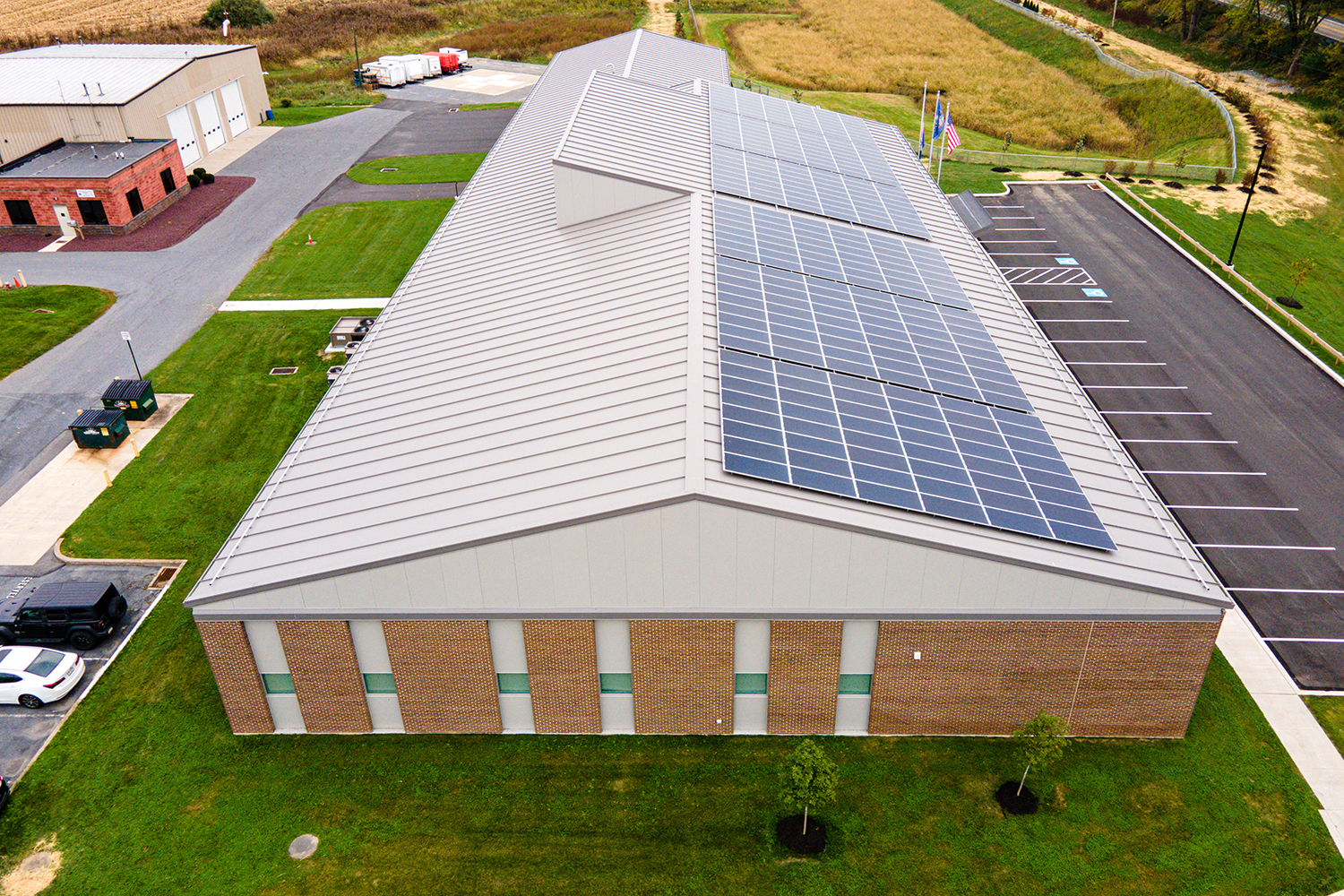
Northampton Forensics Training Center in Bethlehem, Pa. (Photo courtesy of Metl-Span)
Unlimited Options
One of the benefits of IMPs is that they can be easily integrated into pre-engineered metal building designs. Additionally, Kauthen says, they can fit virtually any low-rise, mid-rise and even some high-rise building applications. “IMP manufacturers offer a vast amount of color/finish options, featuring a wide array of panel profiles and textures which give architects nearly unlimited options.”
Galiszanski notes that they’ve seen an increase in the use of IMPs as a barrier back-up system. “This enables the building to be encapsulated and weathertight quickly. Other materials, such as single-skin metal siding or brick, for example, can be installed over the exterior of the IMP giving the building any style desired. The IMP is a finished panel, so a designer can choose to allow the IMP to be exposed in between accent areas of various other materials giving the building more texture and depth.”



